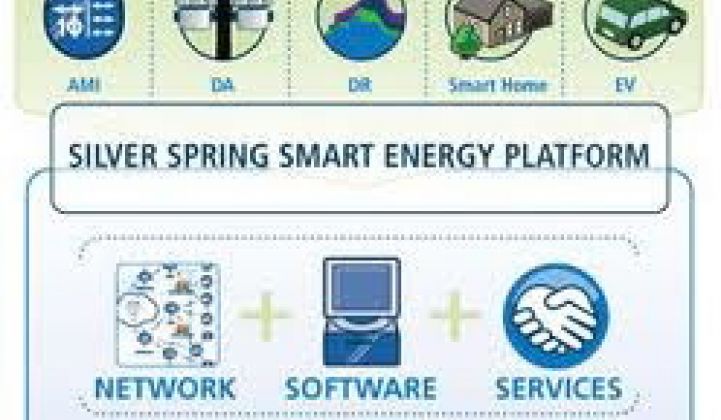Here are a few key numbers we pulled out of Silver Spring Networks’ announcement Tuesday morning of a new, expanded and enhanced partner program.
The first, 65, is the number of partners the Redwood City, Calif.-based startup has working with it, not just on smart meters, but on distribution automation, demand response, plug-in vehicle charging, distributed generation integration and other smart grid stuff.
The second number explains why Silver Spring is so popular with partners. That’s the 22 million smart meters that Silver Spring has networked, or will network, out in the field -- 11 million smart meters deployed as of this spring, and another 11 million under contract, Michelle McLean, director of product marketing, said in an interview.
That’s a major share of the North American smart meter market, as compared to competitors like Itron, Landis+Gyr, General Electric and Elster. Of course, Silver Spring has partnered with all of those companies, since its networking chipsets and radios go inside their meters, so “we’ve partnered from the beginning,” McLean said.
Silver Spring also works with distribution grid sensor and software vendors (GridSense, Sentient Energy); home area network devices (Energate, Onzo); and vehicle charging systems (Clipper Creek, Coulomb). On the broader side, new strategic investors like Hitachi ($30 million) and EMC ($24 million) are taking the startup’s networking and software platform into new territories, though the partners haven’t said much about that yet.
The goal is to build on its deployed networks with some of the biggest utilities in the U.S. to drive new revenues across new business sectors, as it seeks a long-awaited initial public offering. Silver Spring has raised just under $300 million to date, and its June 2011 S-1 declared the intent to raise as much as $150 million on the NASDAQ, for a valuation that could be as much as $3 billion.
Since then it has reported 2011 revenues of $237.5 million, more than triple its 2010 revenues of $70.2 million. Still, it hasn’t yet seen profits from its ongoing business — it lost $92.36 million in 2011, down from $148.45 million in 2010.
While the majority of its deployments are with a few key U.S. customers like Pacific Gas & Electric, Pepco, Oklahoma Gas & Electric, Commonwealth Edison and Progress Energy, the 10-year-old company is also branching into international markets, in Australia since 2009 and more recently in Brazil.
The new partner program launched Tuesday includes new test kits for home area network (HAN) and distribution automation (DA) partners, which should speed the pace of integration and provide more assurance to utility customers that the integration actually works.
Silver Spring has also created a three-tier partner classification, with “platinum” partners having enhanced interoperability bona fides, “premiere” being the standard, and “associate” status for partners that are just getting started, McLean said.
It also names a few new partners for Silver Spring, including Simple Energy, a Boulder, Colo.-based software startup that turns home energy data into games and contests to drive efficiency, and GridSense, an Australian grid software company with about 200 customers.
Having a long list of partners isn’t unique to Silver Spring. All the big meter vendors are working with different networking providers like Silver Spring and local competitor Trilliant, as well as with a host of big grid vendors like Siemens, GE, ABB and Schneider Electric. Cisco, IBM, Microsoft, Oracle, SAP and other IT giants have collected tons of partners for their smart grid efforts.
We’ve also seen the giants buy their way to market in the smart grid communications field. This year has seen ABB acquire wireless broadband networking startup Tropos Networks for an undisclosed sum and Siemens acquire grid router company RuggedCom for $381 million, and last year Itron bought cellular smart meter company SmartSynch for $100 million, to name a few examples.



